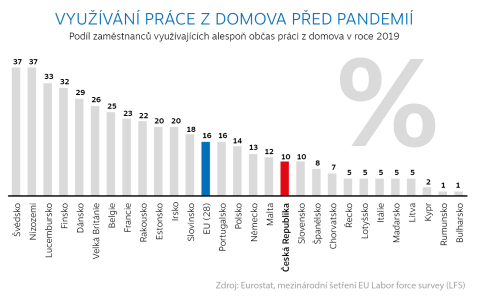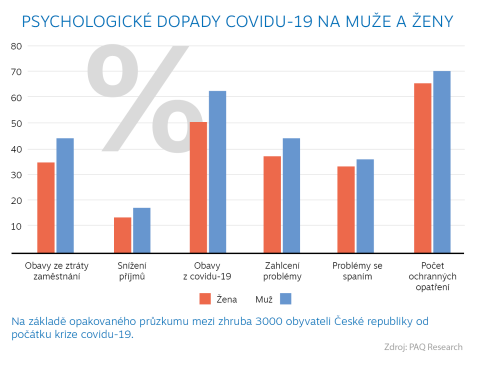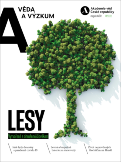
Two years of COVID-19: economists describe how the pandemic affected our lives
11. 08. 2022
In 2020, the COVID-19 pandemic hit our planet like a bolt out of the blue. The complications it has caused couldn’t possibly be foreseen. How did people adjust their personal and professional lives in light of unexpected circumstances? How the past two years have affected the economy, the workings of companies and their employees, and other areas were described by experts from the IDEA think tank of the Economics Institute of the CAS.
First thing in the morning, we no longer check the weather forecast, but the number of individuals newly infected and hospitalised with COVID-19. Instead of the usual news, what follows is a quick overview of current government regulations. Have our politicians passed any new restrictions overnight again? Can we still go get groceries at the supermarket in the morning, or is that time slot designated for the elderly only? As we leave home, we check we haven’t forgotten to take our keys, cellphone, wallet, and facemask or FFP2 respirator.
In addition to a snack, we also pack two clean facemasks in our children’s school backpack. We’re lucky that online classes are over and that students are back at their desks. But for how long? Quarantine whenever a classmate, a teacher, or – worst case scenario – one’s own child falls ill come and go at irregular intervals. Those who don’t have the opportunity to make use of the ‘work from home’ option at work have to then deal with the situation by taking sick leave or vacation. Ring any bells? Until spring this year, it was the normal daily routine.
How it all began
Warning reports about the spread of a new type of coronavirus on the territory of the People’s Republic of China appeared in the media as early as the end of 2019. But back then, no one had any idea how this phenomenon would affect the goings-on of the entire planet for the following two years at least. Even today, it’s impossible to say whether the COVID-19 pandemic is coming to an end or whether the virus will continue to make our lives miserable for years to come. Experts’ predictions vary, just as they have during the pandemic.
There is no area that has not been affected by the COVID-19 pandemic – from healthcare to business, industry, catering and other services, to educational facilities. In short, the virus has transformed the ordinary human world, and its repercussions will be felt for years to come. How have the past two years affected the economy, the workings of companies and their employees, and other areas? The issue was monitored and described by experts from the IDEA think tank at the Economics Institute of the CAS.
Employees turn in suits for sweatpants
Remote work, or, work from home. During the pandemic, it has become one of the key tools to limiting contact between people and reducing the risk of infection. Czech legislation has not yet fully grasped this term and although Section 317 of the Labour Code mentions the concept of working from home, it doesn’t set firm ground rules, nor does it provide details regarding job security or compensation for using private equipment, paying for utilities and internet, and so on.
So what type of rights and obligations do employers and employees have? Who took advantage of the work from home option and to what extent during the pandemic? In which sectors is this model acceptable? Were there any differences between men and women? These and other questions were the focus of the study ‘How many of us can work from home?’ (Matěj Bajgar, Petr Janský, Marek Šedivý; whole study in Czech here) and ‘Working from home: a possibility or necessity?’ (Jakub Grossmann, Václav Korbel, Daniel Münich; whole study in Czech here), which was based on data from the ‘Life during the pandemic’ survey (Czech only), conducted by PAQ Research in cooperation with IDEA think tank and supported by the Czech Academy of Sciences.

Prior to the pandemic, only about 10% of Czechs took advantage of the remote work option.
First of all, it should be said that an employee is not entitled to work from home, just as an employer cannot mandate it. Nor is the employee entitled under current law to any compensation for the costs they incur in making use of work from home. It all depends on how and if both parties agree. Unlike other European countries, our country had a below-average proportion of employees working from home prior to the pandemic. “While in the European Union one sixth of employees made use of this model at least partially, in the Czech Republic, it was only one tenth. However, in countries such as Sweden or the Netherlands, more than one third of employees worked from home at least sometimes,” according to the study ‘Working from home: a possibility or necessity?’ Greater involvement in the Czech work environment is hindered by the nature of the work performed, specifically due to the high share of the manufacturing industry.
On a positive note, Czech households were, technology-wise, quite well-prepared: at the start of the pandemic, 87% of households already had internet access. Data from 2020 also shows that 79% of households owned a tablet or computer. A slight increase was recorded especially when it came to families with children. With distance learning, a tablet, laptop, or computer simply became a necessity.
The most interesting figures from the first wave
As was to be expected, the proportion of remote workers (both employees and/or self-employed) increased significantly with the arrival of the first wave of the COVID-19 pandemic. According to the study cited above, the initial rise in the proportion of people working at least partly from home was in line with the rise in the number of newly infected. It stopped just above 40%, where it plateaued during the roughly five weeks of the peak of the outbreak. Afterwards, there was a decline to pre-pandemic levels. A resurgence occurred during the summer holidays and the autumn wave.
Data on differences within socio-demographic groups showed that with increasing age, the proportion of employees working from home declined. Further differences were evident in relation to levels of educational attainment. The largest proportion of remote workers had university-level education, which the authors of the study suggest is probably due to the type of profession they are in.

In addition to the COVID-19 disease itself and protective measures, people worried about losing their jobs.
Differences also emerged in relation to the size of localities: the highest figures of remote work were found in cities with more than 100,000 inhabitants. And in which sectors was work from home most prevalent? The banking and finance industry and information technology – industries that do not necessarily require workers to be physically present in the workplace. “Surprisingly high proportions were also reported in public administration, health services, and social services,” the authors of the study add.
Differences between men and women
The situation was also different between genders, with the COVID-19 crisis hitting women harder. “They worked from home more than men, with the gap steadily around ten percentage points in the spring months of 2020,” the study says. But differences appeared in other areas as well. Unlike previous recessions, when unemployment typically increased more for men, it was higher for women this time. This is mainly due to many industries that employ larger numbers of women shutting down, such as catering, hospitality, and tourism. Furthermore, the increased need for childcare associated with schools shutting down falls much more heavily on mothers and/or single parents.
Economists estimate that families had to invest 20 additional hours per week in their children because of lockdown measures. Stay-at-home mothers reported spending approximately 6.6 hours a day with their children, while fathers spent 3.4 hours. In households where both parents work full-time, the figure was 4.5 hours per day (mothers) versus 3 hours (fathers). On average, then, mothers spent 50% more time with their children than fathers.
The research also shows that unemployment as a result of the crisis and the long periods that household members were forced to spend together at home led to an increase in domestic violence against women and children. What are the reasons for this? Unemployment and loss of income induce financial stress that can potentially lead to aggression. Furthermore, men may perceive the loss of work as a challenge to traditional gender roles and use violence to force their reinstatement. Another reason could be the increased time partners spend together at home and the existential need for some couples (who would have otherwise broken up) to stay together due to economic hardship.

There has been an increase in domestic violence against women and children during the COVID-19 pandemic.
So far, the article has focused more on the negatives, but changes in work may also bring some positives in the future, according to experts. Greater use of the remote work option may bring more flexible working arrangements for women and better opportunities to combine work and childcare.
A short excursion into schools
While work is part of the everyday goings-on of adults, for children and students, it is school. The closure of schools has not only led to a deterioration in access to education and a reduction in the quality of teaching, but also to economic losses. According to economists, the reduced level of education is very likely to affect the future earnings of current students for many decades of their productive lives. The study ‘The gap of in-person teaching during the COVID-19 pandemic: estimation of invisible economic losses’ by Ole Jann, Daniel Münich, and Lucie Zapletalová quantifies the most significant losses.
The experts estimated the impact of one week of complete school closure to 50 billion CZK for pupils and students and a further 16 billion CZK in lost future public revenue from employers’ insurance (social security) contributions. “However, the estimated figures may differ from the actual ones for many reasons," the authors of the study point out, adding that there are other indirect losses in addition to the direct financial losses in future earnings. For instance, on the part of parents of first graders who have to supervise their children during distance learning and tend to them if they are being homeschooled. Economists have estimated these losses at around 1.2 billion CZK per week.
Two years later...
When we now leave home in the morning and head to work (unless we’re working from home that day), we no longer doublecheck our pockets for a clean facemask or respirator. The obligation to wear one has been abolished since May 2022. Restaurants, shops, schools, and all services are open without restrictions. The number of newly infected people is still reported in the news media on a daily basis, but it should be noted that this information is being “drowned out” by the news on the Russian invasion of Ukraine.
Folk humour, which the Czech nation has never lacked, says that the war in Ukraine has cured society of COVID-19. If we were to apply this to the media and public debate sphere, it’s basically not wrong. People are no longer discussing how much COVID-19 restrictions are making their lives more difficult, but instead, how many Ukrainian refugees are arriving to the Czech Republic and how much energy prices are rising. Whereas during the peaks of the pandemic, people felt constrained by government regulations, now they consider the war-related situation and the arrival of hundreds of thousands of refugees as threatening.
The gloomy mood that gripped Czech society in the spring of 2020 hasn’t completely dissipated, though its causes have changed. What will happen in the future with the next waves of the COVID-19 pandemic is up in the air. We can only hope that additional vaccination boosts will bear fruit and that if, as some experts predict, the next wave comes in autumn 2022, it will not be as horrible as its predecessors.
The story was published in the Czech issue of the CAS magazine A / Věda a výzkum.
Prepared by: Markéta Wernerová, Division of External Relations, CAO of the CAS
Translated by: Tereza Novická, Division of External Relations, CAO of the CAS
Photo: Shutterstock
 The text is released for use under the Creative Commons licence.
The text is released for use under the Creative Commons licence.
Read also
- A trapped state: The pandemic impact on public attitudes, trust, and behavior
- Aerial archaeology: Tracing the footsteps of our ancestors from the sky
- Archaeologists uncover ancient finds along Prague Ring Road
- Our microbiome largely depends on what we eat, says microbiologist Michal Kraus
- The ABCs of writing: Why did its invention mark a turning point for humankind?
- We learn, remember, forget… What can memory actually do? And can we outsmart it?
- New Center for Electron Microscopy in Brno opens its doors to global science
- The hidden lives of waste: What can we learn from waste workers and pickers?
- A unique lab is hidden right beneath Prague’s Vítkov Hill
- Renewables are a strategic investment in European security, scientists say
The Czech Academy of Sciences (the CAS)
The mission of the CAS
The primary mission of the CAS is to conduct research in a broad spectrum of natural, technical and social sciences as well as humanities. This research aims to advance progress of scientific knowledge at the international level, considering, however, the specific needs of the Czech society and the national culture.
President of the CAS
Prof. Eva Zažímalová has started her second term of office in May 2021. She is a respected scientist, and a Professor of Plant Anatomy and Physiology.
She is also a part of GCSA of the EU.
